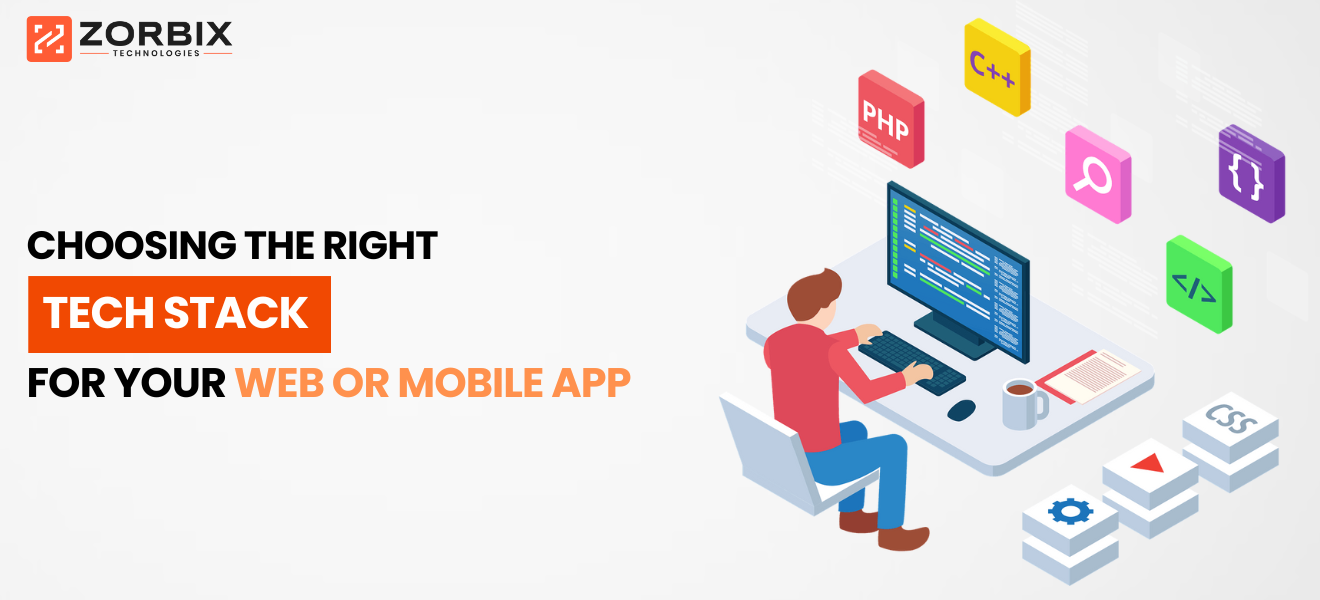
Choosing the Right Tech Stack for Your Web or Mobile Application
When embarking on a new web or mobile app project, one of the most important decisions is choosing the right tech stack. Your tech stack—the combination of programming languages, frameworks, libraries, and tools—determines how your app will perform, scale, and evolve. Choosing wisely can save time, reduce costs, and ensure the app is future-proof. In this post, we’ll walk through key factors to consider when selecting the right tech stack for your app.
Project Requirements and Scope
Every app has unique requirements, and these should heavily influence your tech stack decision. Ask yourself the following:
- What is the core functionality of the app?
- Does it need to handle real-time data, like a chat or live stream app?
- Is it content-heavy, like an e-commerce platform?
- Are there any advanced features, such as AI integration or complex user interactions?
- Is the project complex enough to require these technologies or can be built just using wordpress?
For example, if you're building a web app focused on high user interaction and dynamic content updates, a tech stack like React.js for the frontend paired with Node.js for the backend connected to a MySQL or MongoDB database could provide excellent performance.
Frontend Technologies
Your choice of frontend technology defines the user interface and experience. Modern frontend frameworks like React.js, Vue.js, and Angular are amont the popular options, each with their pros and cons:
- React.js: Highly flexible and widely used, React is known for its component-based architecture and high performance. It's backed by Facebook and has a vast ecosystem of libraries.
- Vue.js: Known for its simplicity and ease of integration, Vue is lightweight and user-friendly, making it a good option for small to medium-sized projects.
- Angular: A comprehensive framework maintained by Google, Angular is excellent for large-scale, enterprise-level applications with complex requirements.
When building a mobile app, you might choose Cross-Platform frameworks like Flutter or React Native to allow development for both Android and iOS with a single codebase.
Backend Technologies
The backend handles your app’s logic, database interactions, and communication with the server. Your choice of backend stack should depend on the project’s complexity, expected user load, and specific functionalities. Some popular options include:
- Node.js (JavaScript): Perfect for real-time applications, such as chats or live collaboration tools. Node.js is event-driven and handles multiple connections efficiently.
- Django (Python): A robust framework that's known for its simplicity and speed of development. It’s a great choice if security is a primary concern, such as in financial or healthcare applications.
- .NET: A powerful framework by Microsoft, .NET is widely used in enterprise environments for building secure, scalable, and high-performance applications. It's great for large systems with complex business logic and can be integrated seamlessly with other Microsoft services like Azure.
Database Selection
Your app’s data storage requirements also play a key role in the tech stack decision. Databases can broadly be categorized as SQL or NoSQL:
- SQL Databases: If your app requires structured data with complex relationships, an SQL database like PostgreSQL or MySQL is a solid choice.
- NoSQL Databases: For apps that need to handle unstructured or semi-structured data, or scale horizontally, consider NoSQL databases like MongoDB or Firebase.
For mobile apps, especially those needing real-time data sync, Firebase is a popular option for backend-as-a-service (BaaS).
Scalability and Performance
Your app’s ability to handle an increasing number of users and data over time depends on how scalable the tech stack is. Some questions to consider:
- Can the tech stack easily accommodate future growth?
- Is horizontal or vertical scaling more critical for your app?
For example, if you expect rapid growth or global usage, frameworks like Node.js or Go for backend and React or Vue for frontend offer scalability with minimal latency. Cloud platforms such as AWS or Google Cloud also play a major role in managing infrastructure and scaling.
Security
Security is paramount in app development, especially for industries like finance, healthcare, or e-commerce. Backend frameworks like Django, Ruby on Rails, and Spring Boot come with built-in security features like user authentication, data validation, and protection against common vulnerabilities like SQL injection and cross-site scripting (XSS).
Future Maintenance and Support
Consider the long-term maintainability of the tech stack. If the technology is relatively new or niche, it may face challenges in the future in terms of updates, community support, and developer availability. Opt for a tech stack that is well-established and has a proven track record.
Conclusion: Making the Right Choice
Choosing the right tech stack for your web or mobile app can make the difference between a successful, scalable project and one that struggles to keep up with growth. At Zorbix Technologies, we take a consultative approach to help you choose the right stack based on your business goals, project scope, and future plans. Whether you're building a real-time mobile app, a high-traffic web platform, or an AI-powered business solution, our team ensures you have the tools and technologies to bring your vision to life.
Feel free to reach out to discuss your project and how we can help you build a robust, scalable solution with the right tech stack!
Connect with Zorbix
Ready to take the first step towards unlocking opportunities, realizing goals, and embracing innovation? We're here and eager to connect.




